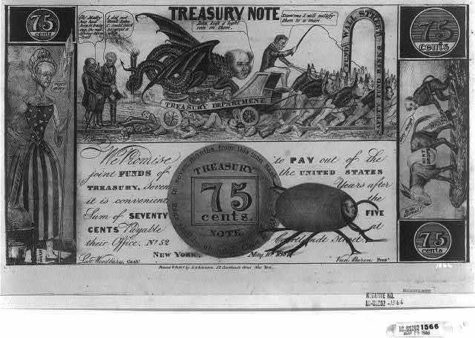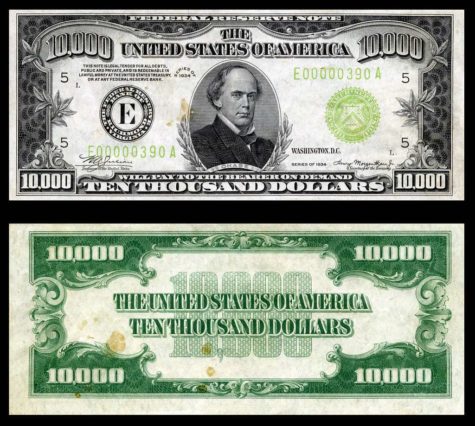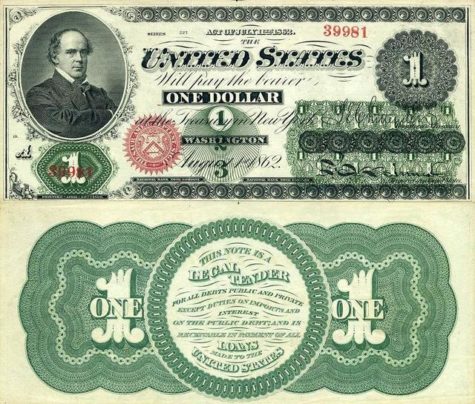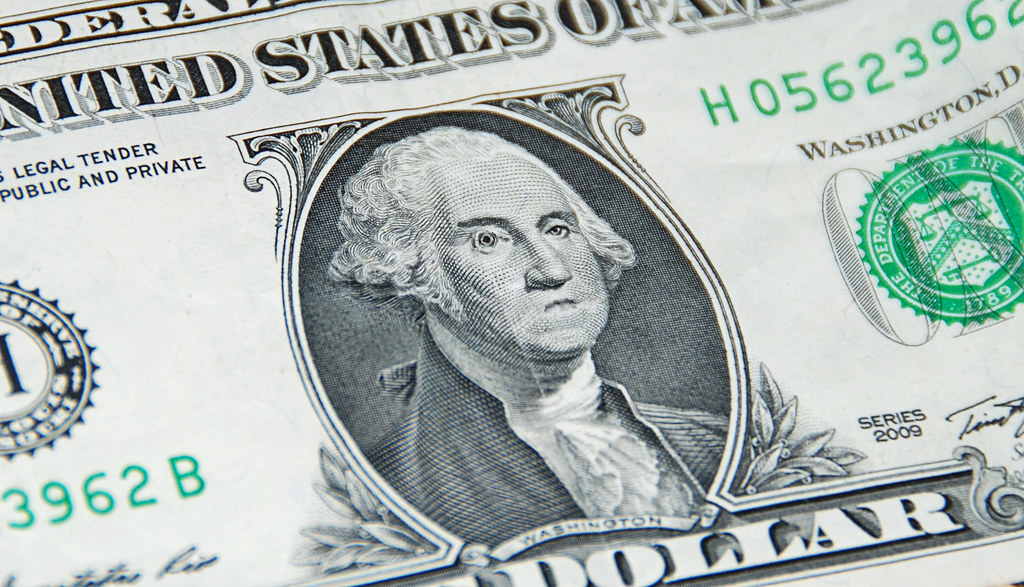What is money… and more importantly why is it green?
March 20, 2023
You work all day, and while you’re leaving you realize you want McDonald’s. While you’re getting ready to pay, you look down at your money. A $10 bill, you wonder why is it green? And where did money come from?
Money was created for making fair trades
People who sold goods had to profit somehow. Before money people would make trades. For example, someone would trade a gallon of milk for beans. So having money allowed people to make profits and purchases to benefit themselves, their families, and their goods. According to the article, “History of United States Currency” by mycreditunion.gov, “The government did not issue paper money until 1861. In the interim years, however, the government did issue “Treasury notes” intermittently during periods of financial stress, such as the War of 1812, the Mexican War of 1846, and the Panic of 1857.” The wars increased the demand for money more than ever.
trade a gallon of milk for beans. So having money allowed people to make profits and purchases to benefit themselves, their families, and their goods. According to the article, “History of United States Currency” by mycreditunion.gov, “The government did not issue paper money until 1861. In the interim years, however, the government did issue “Treasury notes” intermittently during periods of financial stress, such as the War of 1812, the Mexican War of 1846, and the Panic of 1857.” The wars increased the demand for money more than ever.
Euros, pesos, pounds, yen, and so many more
Each country has its own form of currency. This means that 1 euro does not equal 1 American dollar. Currencies were created based on the needs of each country. Having a low face value entices people to want to buy their goods. According to U.S. Currency Education Program, “The United States officially adopts the dollar sign in 1785. The symbol evolves from the Spanish American figure for pesos. From colonial to modern times, the United States has issued several types of banknotes with unique purposes, like paying taxes, earning interest on an investment, or buying goods.”
We are all familiar with money
$1, $5, $10, $20. We’ve even seen $2 bills. Did you know the last time they printed a $2 bill was in 1966? We stopped printing two dollar bills because of demand. Americans were not needing specific bills anymore, causing the end of printing. The United States also introduced larger bills such as $500, $1,000, $5,000, and $10,000. They discontinued these for the same reason as the two dollar bills. No average American needed to be carrying around a $10,000 bill in the wallet. According to The Bureau of Engraving and Printing, “On July 14, 1969, the Department of the Treasury and the Federal Reserve System announced that currency notes in denominations of $500, $1,000, $5,000, and $10,000 would be discontinued immediately due to lack of use. Although they were issued until 1969, they were last printed in 1945.”
printing. The United States also introduced larger bills such as $500, $1,000, $5,000, and $10,000. They discontinued these for the same reason as the two dollar bills. No average American needed to be carrying around a $10,000 bill in the wallet. According to The Bureau of Engraving and Printing, “On July 14, 1969, the Department of the Treasury and the Federal Reserve System announced that currency notes in denominations of $500, $1,000, $5,000, and $10,000 would be discontinued immediately due to lack of use. Although they were issued until 1969, they were last printed in 1945.”
Mint Act
Discontinuing bills connects back to the Mint Act of April 2, 1792. This created the coinage system, the dollar sign, and the dollar that represents US currency. According to Adam Hayes, a Ph.D. financial writer for Wall Street stated, “The Coinage Act of 1873 revised the laws of its predecessor to pivot the country toward the gold standard and away from silver. Section fifteen of the Act specified the exact silver coins to be minted in the future and their respective weights, but the standard silver dollar was not included. Section seventeen stated that “no coins, either of gold, silver, or minor coinage, shall hereafter be issued from the mint other than those of the denominations, standards, and weights herein set forth.” This meant that only the coins explicitly included in the Coinage Act would be legal tender from that point forward.”
Since the Mint Act, they decided on 6 locations for money to be printed.
- Denver, Colorado
- Fort Knox, Kentucky
- Philidelphia, Pennsylvania
- San Fransico, California
- Washington, DC
- West Point, New York
There are only 4 mint locations that operate today. Denver, Philadelphia, Washington, and West Point. The purpose of these locations is to produce coins for Americans to spend and save while Fort Knox holds all the United States gold.
So after all that, it brings me back to my original question. Why is money green? According to The Musem of American Finance, “Greenbacks, issued in March 1863, were a form of legal tender paper money created by the Union government to help finance the Civil War.” Another source, Esther Crain said, “Counterfeiting was rampant at the time; clever thieves would often scratch off faded ink from bills and change the dollar amount, or they would photograph them and pass the photos off as the real thing. To prevent this, one side of these new bills was printed in a green-black ink, which was less likely to fade.” 
Money was not made green for decoration, the color green was chosen for a reason. Green was seen as a symbol of stability. According to 99designs, the color green symbolizes wealth and prosperity. Money was made green to prevent people from being greedy, but it was also chosen to represent stability, wealth, and prosperity.
